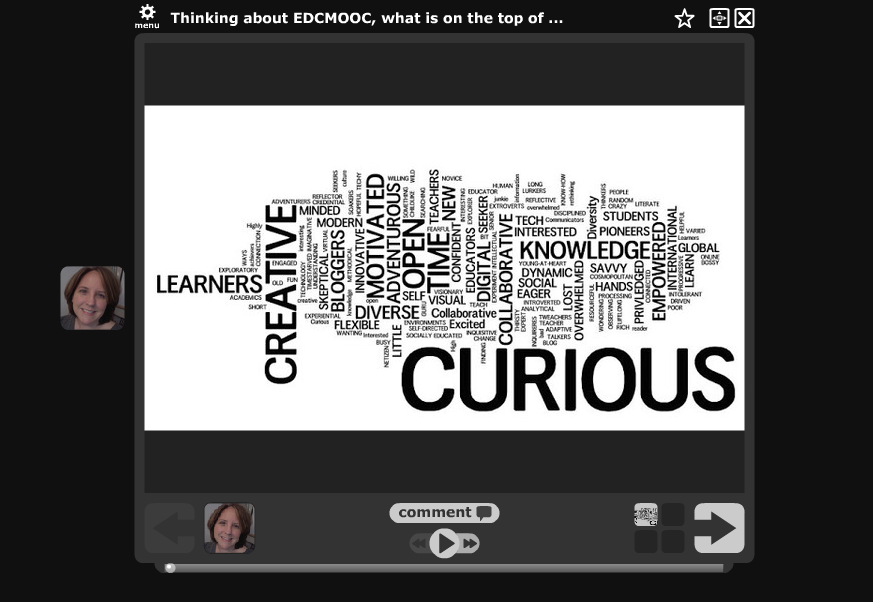
A couple of years ago I was looking for a way to bring a sense of embodied-ness to an online class where students simply couldn’t be together synchronously. The traditional discussion board was good, but had limits. So in seeking tools that might help with this snag, I came across VoiceThread. Since then, I’ve used this tool quite a lot to allow for project presentations and peer feedback. Students have loved it.
So, I thought I would test out the possibility of having an asynchronous, voice discussion with individuals participating in the e-Learning and Digital Cultures MOOC. Herre are the steps:
- Click on the image above and it will take you to the VoiceThread for this discussion.
- Hit play and listen to what has been contributed thus far to the discussion.
- If you want to add your own thoughts, press “comment” (you will have to sign in or register – sorry).
- Choose the “record” option and record your voiced contribution to the discussion.(try not to use “text” it defeats the embodied purpose and unfortunately I don’t have an account level that would accommodate video).
- Click “stop” and then “save.”
I am likely to provide some sort of synthesis of what folks share for those who don’t want to take the time to listen to the whole discussion (if one ends up happening). Mostly, I’m interested to see if folks have ideas on how else to created embodied presence asynchronously. I’m also interested to hear how others might use a tool like this as well.
UPDATE: The original VoiceThread for the eLearning and Digital Cultures now has over 50 voice comments and a small group has now progressed to scheduling a real-time Google Hangout. I am now drying to jumpstart a VoiceThread for the MIT Learning Creative Learning MOOC. That VoiceThread can be found here – http://bit.ly/YxC7ff.


